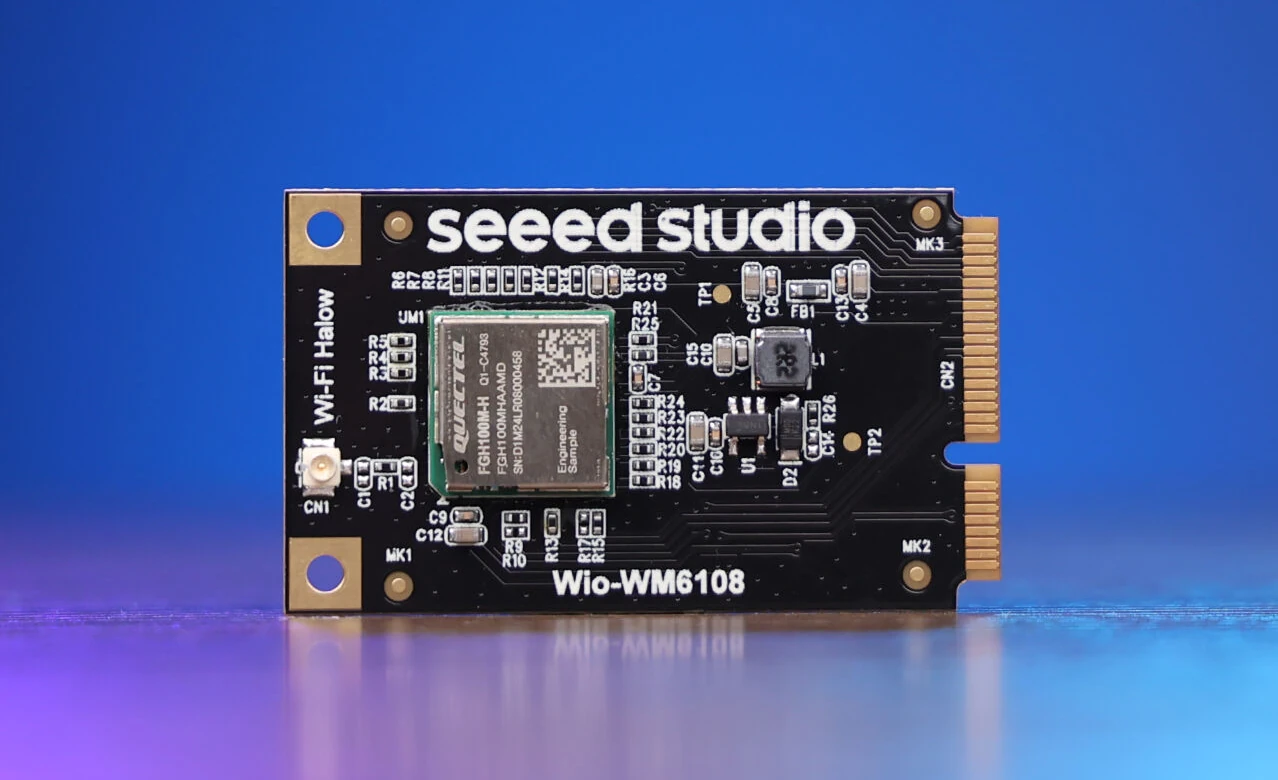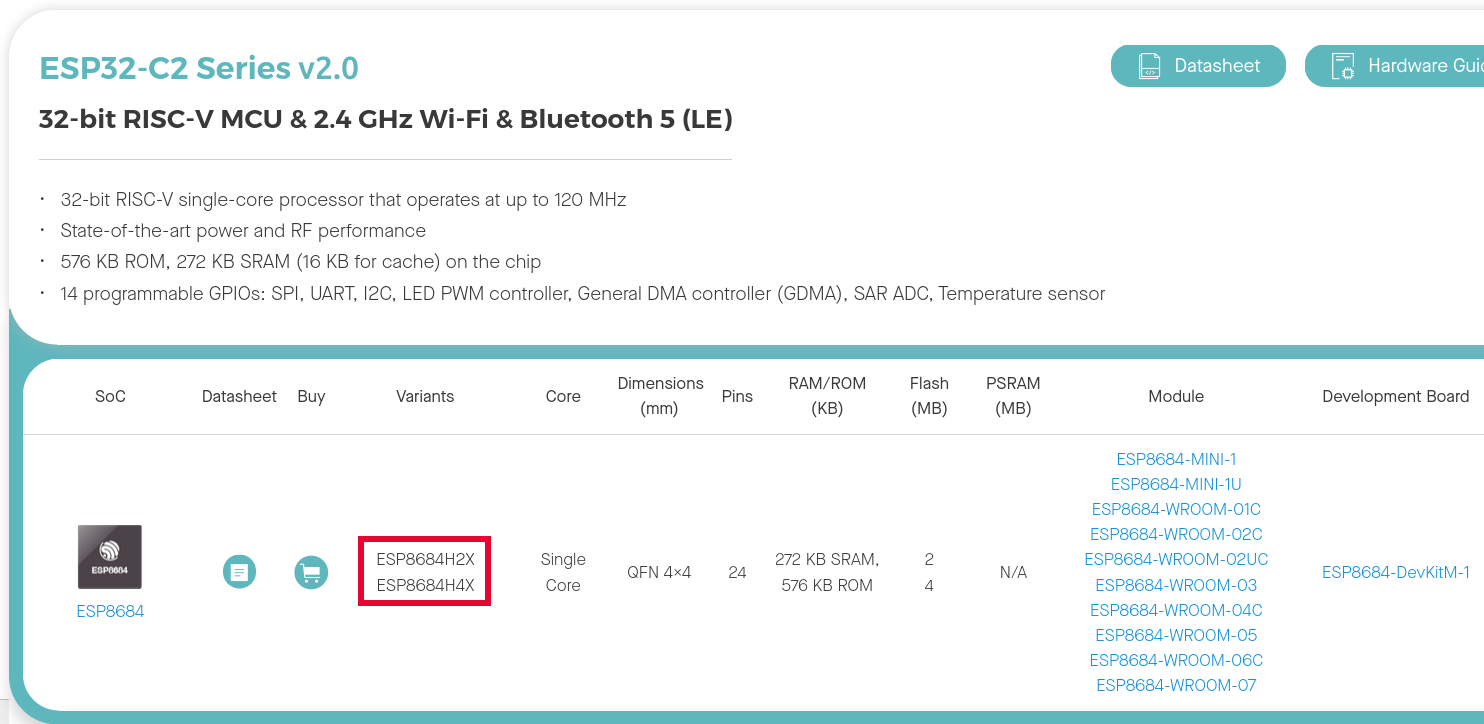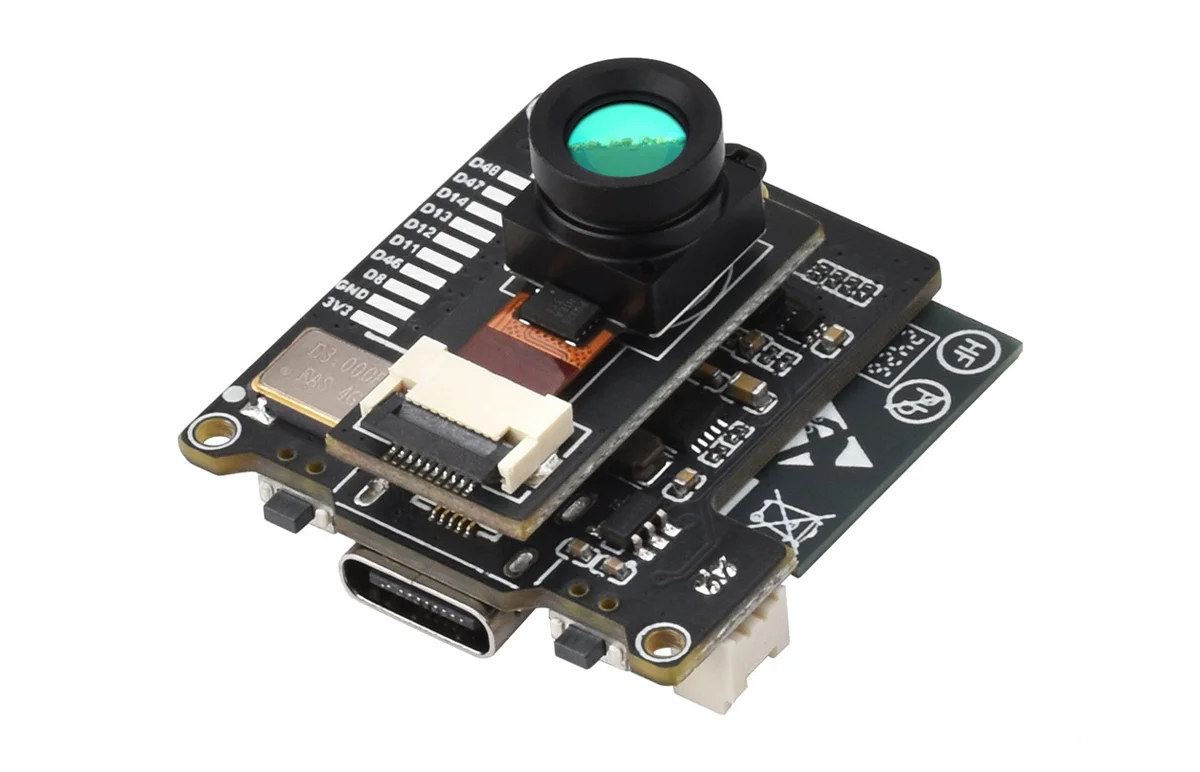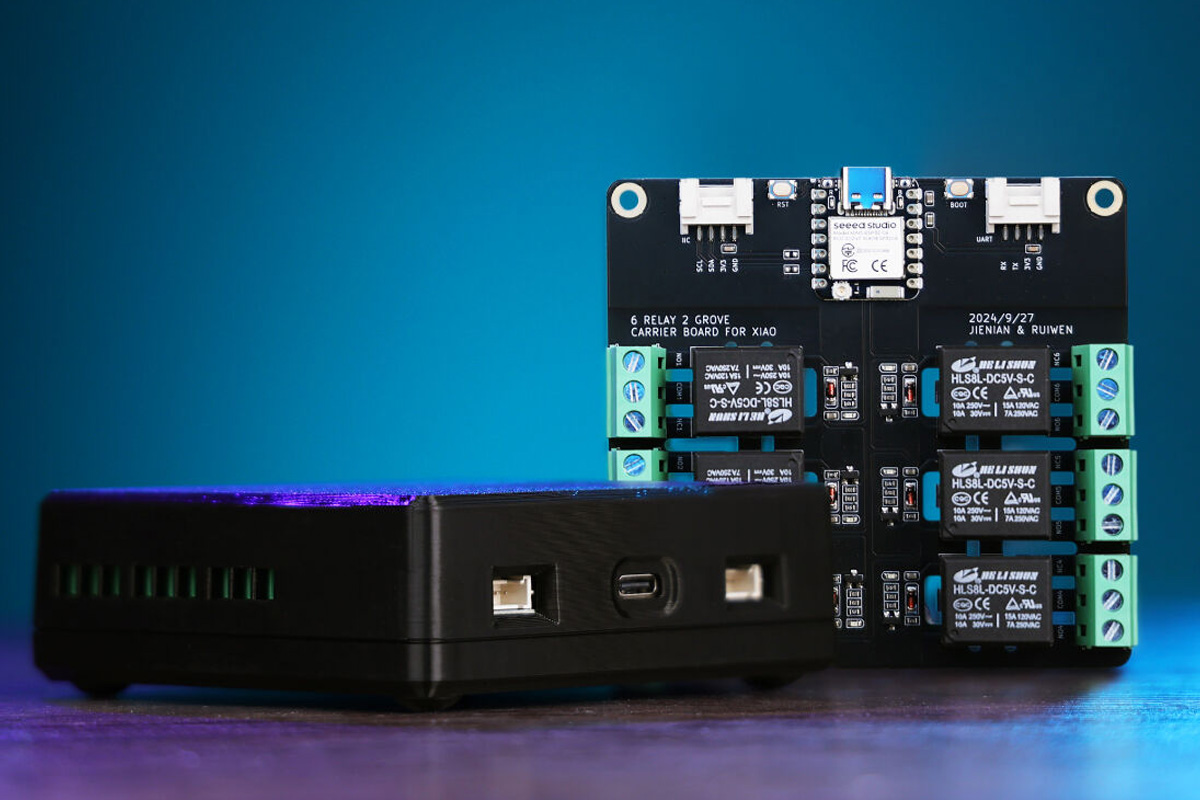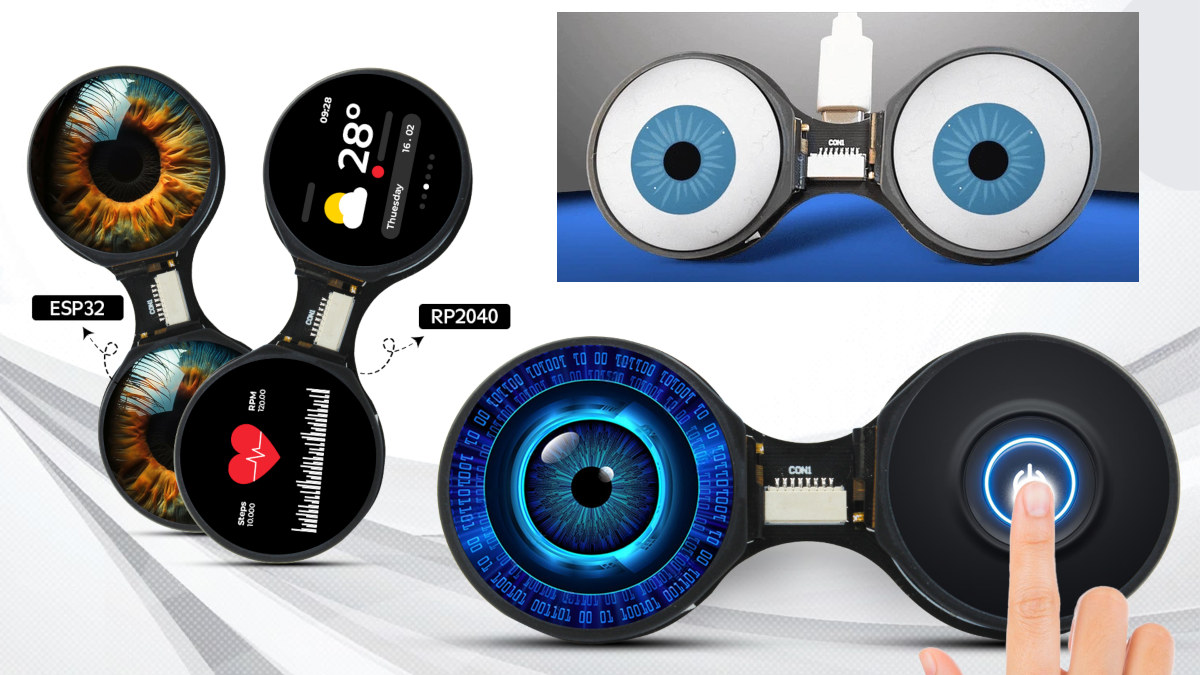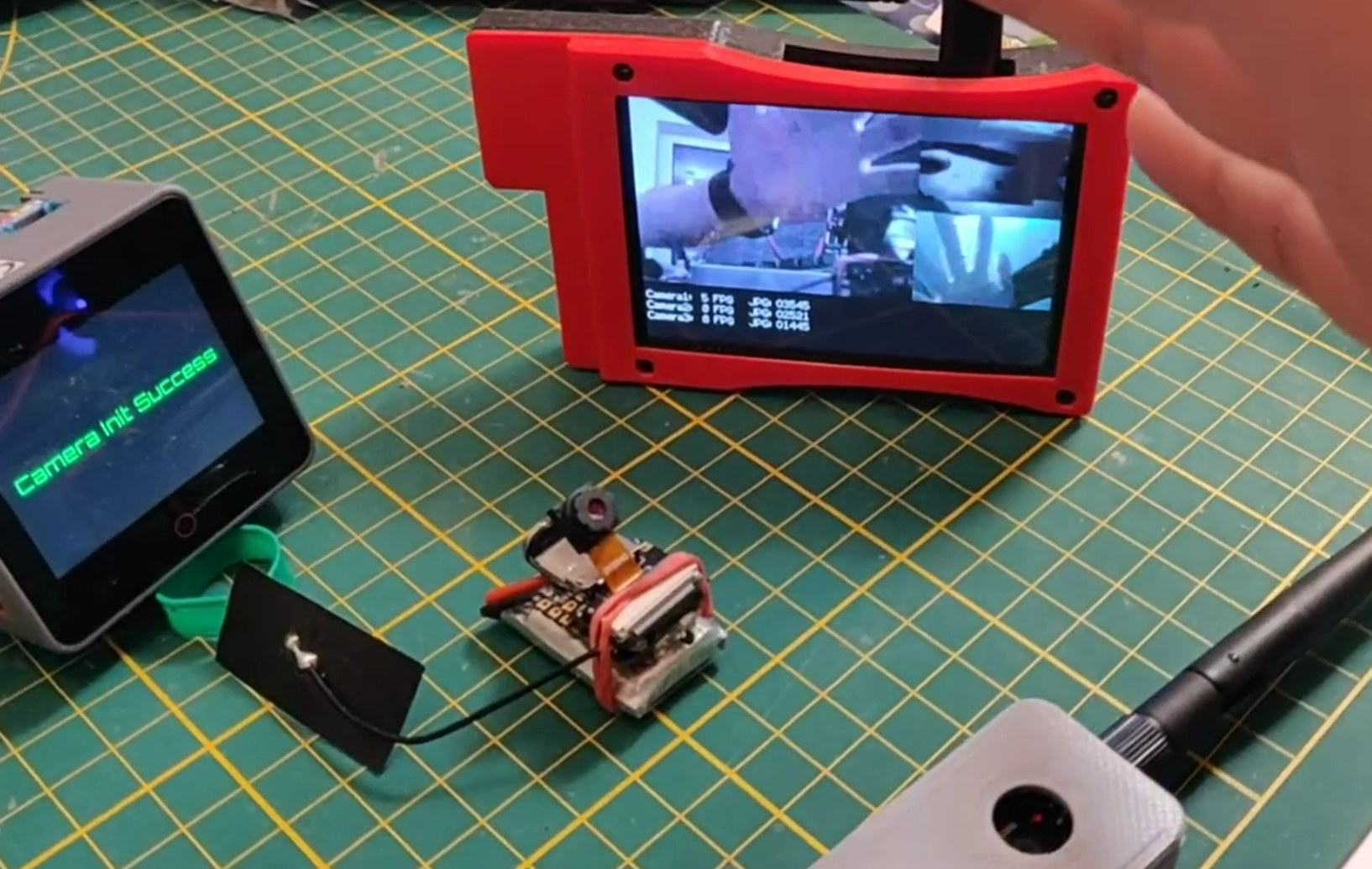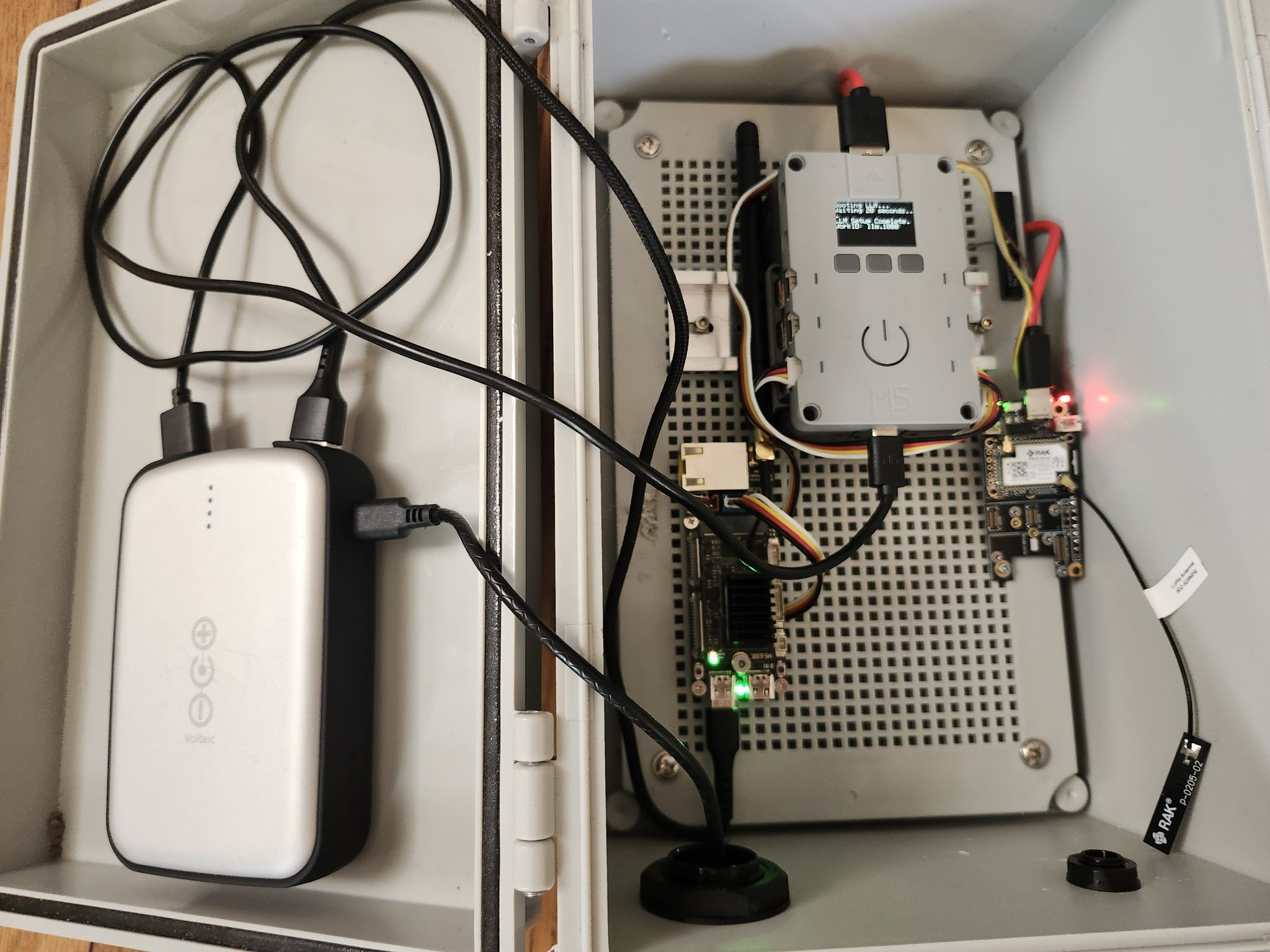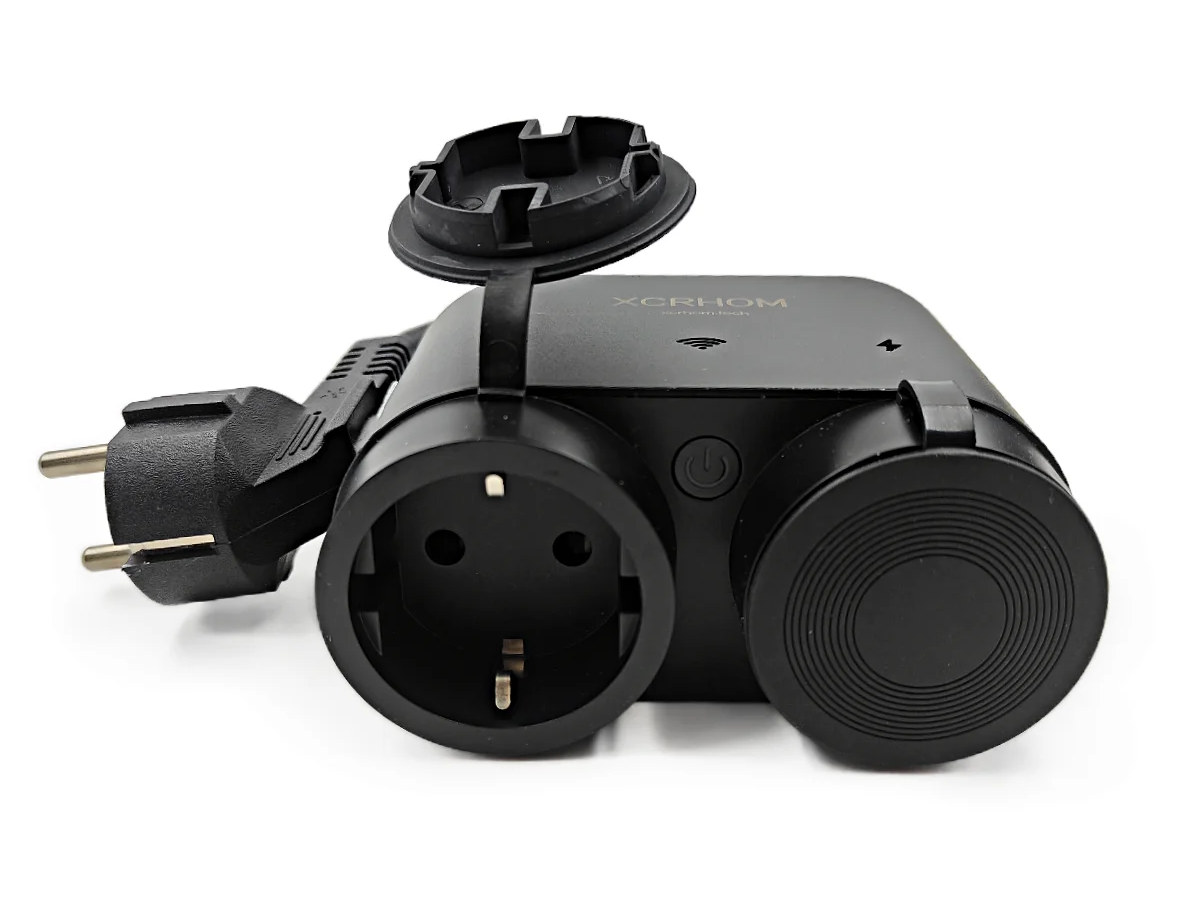Seeed Studio has launched two 900 MHz WiFi HaLow modules for long-range, low-power communication based on Quectel FGH100M-H: the Wio-WM6180 Wi-Fi HaLow mini-PCIe module designed to be installed in hardware such as OpenWrt routers or even Raspberry Pi SBCs, and the Wi-Fi HaLow module for Seeed Studio XIAO designed to take XIAO boards with Espressif, Raspberry Pi, or Nordic Semi microcontrollers. These solutions can be useful for Smart Home devices, industrial automation, Smart City infrastructure, Smart Agriculture, and environmental monitoring systems. The most typical use cases are WiFi HaLow cameras with up to one kilometer range. Wio-WM6180 Wi-Fi HaLow mini-PCIe Module Specifications: Quectel FGH100M-H Wi-Fi HaLow module compliant with IEEE 802.11ah standard. Chipset – Morse Micro MM6108 Wi-Fi Frequency Band – 902–928 MHz Operating mode – Access Point (AP) or Station (STA) Modulation – OFDM, BPSK, QPSK, 16QAM, 64QAM Data Rate – Up to 32.5Mbps link rate Range – Up […]
ESP32-C2 v2.0 wireless SoC adds 20 KB of additional SRAM, 100 KB of extra flash
Espressif ESP32-C2 (ESP8684) has been updated to v2.0 with 20 KB of additional SRAM, 100 KB of extra flash, with some improvements in terms of erase and program performance. The ESP32-C2 was first unveiled in April 2024 with limited details, and launched in October of the same year as the ESP8684 SiP combining ESP32-C2 die with 4MB flash, as well as a few ESP8684 modules and the ESP8684-DevKitM-1 development board. The ESP32-C2 is meant to be a cost-down version of the ESP32-C3 with less RAM and peripherals, and the ESP32-C2 v2.0 slightly improved on that with parts adding X to the name: ESP8684H2X (2MB flash) and ESP8684H4X (4MB flash). Modules and devkit names are also impacted, albeit not shown yet in the screenshot below. The part names had to be updated because chip revision v2.0 and previous chip revisions are not software-compatible, so Espressif had to update the ordering codes […]
ESP32-S3 infrared thermal imaging camera module offers 80×62 resolution, 45° and 90° wide angle versions
Waveshare has launched an ESP32-S3-based thermal imaging camera module based on the same 80 x 62 infrared camera found in its Thermal-45/90 camera Raspberry Pi HAT and Thermal-45/90 USB camera. The thermal camera module is offered with two field of views, namely 45° for the basic version and 90° for the wide angle variant, twenty solder pads with GPIOs, UART, and I2C for expansion, a USB-C port for power and programming, and a 2-pin header to connect a battery if required. Waveshare “ESP32-S3 IR thermal imaging camera module” specifications: Wireless Module ESP32-S3-WROOM-1 MCU – ESP32-S3 dual-core Tensilica LX7 up to 240 MHz with 512KB SRAM, up to 8MB PSRAM Storage – 16MB flash Wireless – WiFi 4 and Bluetooth LE 5 Thermal Camera – Meridian Innovation MI0802 Resolution – 80 × 62 Field of View (FOV) 56°(D) x 45°(H) x 34°(V) (Baisc version) 122°(D) x 90°(H) x 67°(V) (Wide angle […]
ESP32-C6-based Wi-Fi relay board features six 10A relays, supports Home Assistant, 3D printed enclosure
Seeed Studio’s XIAO 6-Channel Wi-Fi 5V DC Relay is a compact ESP32-C6 Wi-Fi relay board built around the XIAO ESP32C6 module which supports Wi-Fi 6, BLE 5.0, Zigbee, and Thread connectivity. Designed for remote control and automation, the device comes with pre-installed ESPHome firmware and features six independent relay channels, each supporting 10A at 30V DC or 250V AC, making it ideal for simultaneously controlling multiple DC or AC devices. The board also has two grove ports for sensors and actuators, making it suitable for home automation, industrial control, energy management, smart agriculture, and other applications. XIAO 6-Channel Wi-Fi 5V DC Relay Board Specifications Main module – XIAO ESP32C6 SoC – ESP32-C6 CPU Single-core 32-bit RISC-V clocked up to 160 MHz Low-power RISC-V core @ up to 20 MHz Memory – 512KB SRAM, 16KB low power SRAM Storage – 320KB ROM, and 4MB flash Wireless – 2.4 GHz WiFi 6, Bluetooth […]
TouchEye dual round touch display module features Raspberry Pi RP2040 or ESP32-S3 MCU (Crowdfunding)
Last December, Debashis wrote about the Waveshare Double Eye LCD module comprised of two round displays that can be useful for robotics or art projects since they can be made to look like googly eyes. The module is designed to be connected to a host MCU via an SPI interface. The TouchEye looks similar but offers larger 1.28-inch round displays (instead of 0.71-inch), and also adds a touch function. Instead of being connected to a host MCU via SPI like the Waveshare model, the TouchEye dual touch display module is a complete board with an onboard MCU that can be either a Raspberry Pi RP2040 or an Espressif ESP32-S3 that also offers WiFi and Bluetooth connectivity. Both boards also feature a USB-C port for power and programming, a microSD card slot, a GPIO breakout connector, and programmable buttons. TouchEye module specifications: MCU (one or the other) Raspberry Pi RP2040 dual-core […]
ESPNowCam library enables ESP32 video camera or data transmission with the ESP-NOW protocol
ESPNowCam is an open-source library for ESP32 camera boards that relies on the ESP-NOW protocol for efficient point-to-point, one-to-many, or many-to-one video or data transmission. ESP32 microcontrollers already support WiFi or Bluetooth connectivity, but the ESP-NOW offers an alternative in scenarios where low latency is required and/or access to a router is not feasible or practical. That’s why we’ve previously seen ESPNOW used in ESP32 drones. As its name implies, the ESPNowCam project leverages the ESP_NOW wireless protocol for ESP32 video cameras, but can also be used for data transmission. ESPNowCam highlights: Transmission modes One transmitter to multiple receivers using the internal ESPNow broadcasting feature (1:N mode) Peer-to-peer (P2P) connections utilizing MAC address targeting (1:1 mode) Multi-sender mode with one receiver (N:1 mode) No need for IPs, routers, or credentials The project was first released in January 2024, but I’ve only noticed it, and it had several iterations since then. […]
Solar-powered LLM over Meshtastic solution may provide live-saving instructions during disasters and emergencies
People are trying to run LLMs on all sorts of low-end hardware with often limited usefulness, and when I saw a solar LLM over Meshtastic demo on X, I first laughed. I did not see the reason for it and LoRa hardware is usually really low-end with Meshtastic open-source firmware typically used for off-grid messaging and GPS location sharing. But after thinking more about it, it could prove useful to receive information through mobile devices during disasters where power and internet connectivity can not be taken for granted. Let’s check Colonel Panic’s solution first. The short post only mentions it’s a solar LLM over Meshtastic using M5Stack hardware. On the left, we must have a power bank charge over USB (through a USB solar panel?) with two USB outputs powering a controller and a board on the right. The main controller with a small display and enclosure is an ESP32-powered […]
Xcrhom T4S WiFi outdoor smart socket features power meter function, Tasmota open-source firmware
ESPHome is the favorite open-source firmware of Smart Home devices, but Tasmota is another option that’s been available for many years. We’ve just seen fewer products based on Tasmota (previously Sonoff-Tasmota) in recent years, but it recently showed up on a credit card-sized quad relay board, and I’ve just come across Maker Go’s Xcrhom T4S WiFi Outdoor Smart Socket that also ships with Tasmota firmware and sells on AliExpress for $24.88 shipped. The Xcrhom T4S exposes two sockets with dust and rainproof covers to be used safely outdoors, integrates a power meter, and the Tasmota firmware enables MQTT support, Home Assistant compatibility, and support for Amazon Alexa and Google Assistant. Xcrhom T4S specifications: Two EU sockets Max load – 3680W in total (16A x 230V) Rated Current – Up to 16A in total Power Input – 100 to 240V AC 50Hz Wireless – 2.4 GHz 802.11b/g/n WiFi 4; Tx power […]


